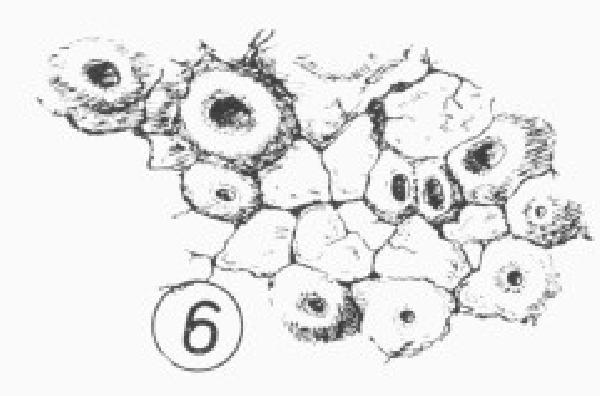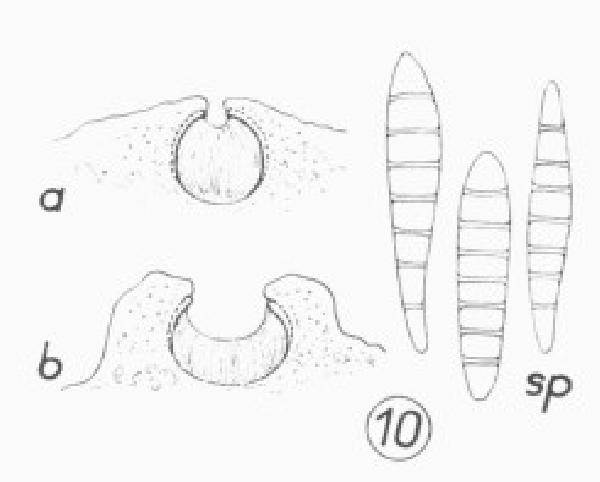Gyalecta hypoleuca (Ach.) Zahlbr.
Cat. Lich. Univ., 2: 711, 1924. Basionym: Urceolaria hypoleuca Ach. - Meth. Lich.: 149, 1803.
Synonyms: Gyalecta gyalectoides (A. Massal.) Lindau; Gyalecta thelotremoides (Nyl.) Kremp.; Petractis hypoleuca (Ach.) Vězda; Secoliga gyalectoides (A. Massal.) A. Massal.; Thelotrema gyalectoides A. Massal.; Thelotrema gyalectoides var. exanthemoides A. Massal.; Volvaria gyalectoides (A. Massal.) Trevis.
Distribution: N - Frl (Henssen & Tretiach 1995, Breuss 2008), Ven (Lazzarin 2000b, Nascimbene 2008c), TAA (Nascimbene 2008b), Lomb, Lig (Watson 2014). C - Tosc (Tretiach & al. 2008), Marc (Nimis & Tretiach 1999). S - Camp (Garofalo & al. 2010), Pugl, Cal (Puntillo 1996).
Description: Thallus crustose, episubstratic, 0.2-0.4 mm thick, continuous, rimose or rimose-areolate, pale yellowish white to pinkish white. Apothecia 0.3-0.7 mm across, urceolate, half-immersed, at first covered by a thalline layer and appearing perithecioid, later erumpent and with a concave to flat, orange-red to flesh-coloured disc and a usually smooth, thick, convex proper margin. Proper exciple 10-35 µm wide; hymenium colourless, 120-170 µm high, I+ blue; paraphyses thread-like, inspersed with oil droplets and granules; hypothecium poorly developed. Asci 8-spored, cylindrical, thin-walled, without a tholus, 60-100 x 8-16 µm. Ascospores (5-)7-8(-9)-septate (rarely with an additional longitudinal septum), hyaline, narrowly fusiform, straight or slightly curved, (23-)25-35(-38) x (4.5-)5-6(-7.5) µm, not halonate. Photobiont trentepohlioid. Spot tests: K-, C-, KC-, P-, UV-. Chemistry: without lichen substances.
Note: a cool-temperate species found on steeply inclined or rain-sheltered faces of dolomitic rocks and limestone in rather sheltered situations, mostly in woodlands.
Growth form: Crustose
Substrata: rocks
Photobiont: Trentepohlia
Reproductive strategy: mainly sexual
In underhangs rarely wetted by rain
Commonnes-rarity: (info)
Alpine belt: extremely rare
Subalpine belt: very rare
Oromediterranean belt: extremely rare
Montane belt: rather common
Submediterranean belt: extremely rare
Padanian area: absent
Humid submediterranean belt: extremely rare
Humid mediterranean belt: absent
Dry mediterranean belt: absent
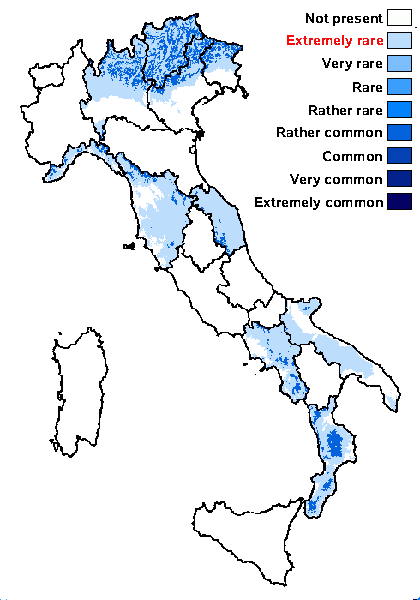
Predictive model
Herbarium samples


P.L. Nimis; Owner: Department of Life Sciences, University of Trieste
Herbarium: TSB (35426)
2002/12/02
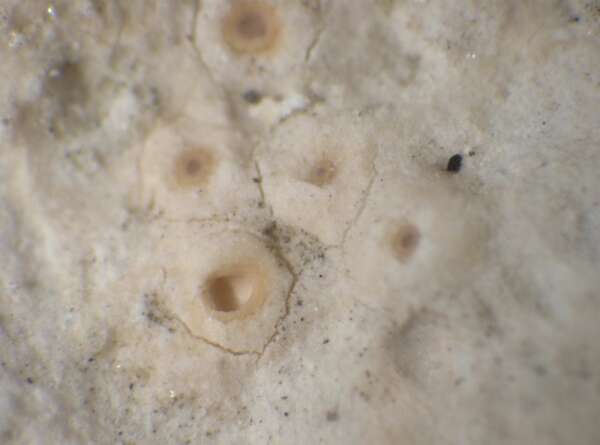

P.L. Nimis; Owner: Department of Life Sciences, University of Trieste
Herbarium: TSB (17181)
2002/02/21
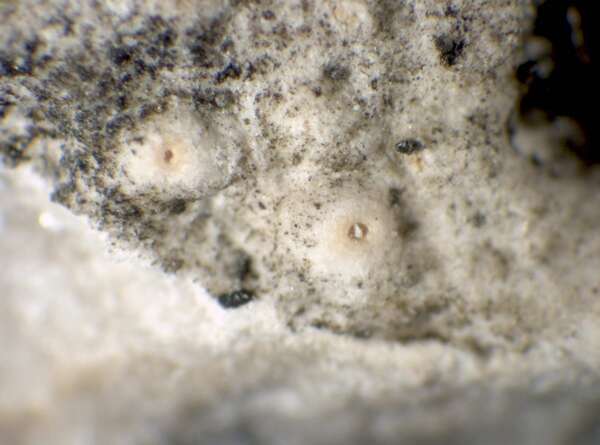

P.L. Nimis; Owner: Department of Life Sciences, University of Trieste
Herbarium: TSB (16899)
2001/12/10
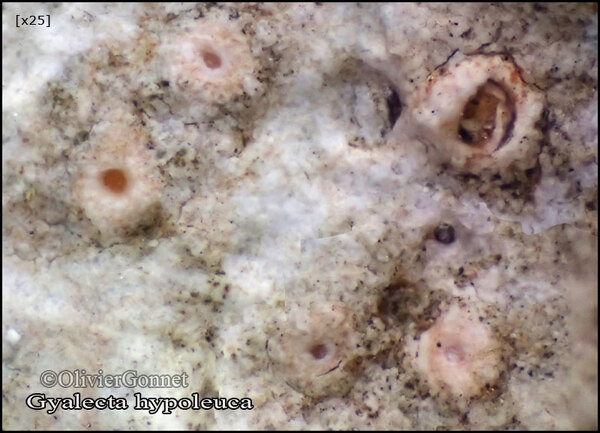
Courtesy Danièle et Olivier Gonnet - Source: https://www.afl-lichenologie.fr/Photos_AFL/Photos_AFL_G/Gyalecta_hypoleuca.htm
France, session AFL Luberon 2009 - Vaucluse
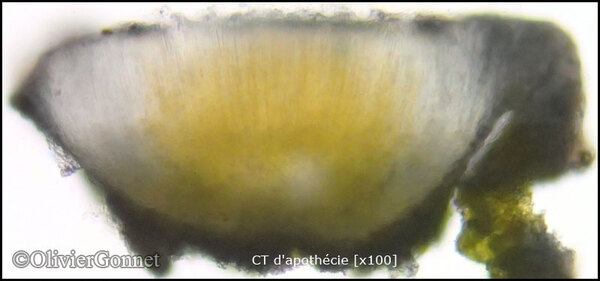
Courtesy Danièle et Olivier Gonnet - Source: https://www.afl-lichenologie.fr/Photos_AFL/Photos_AFL_G/Gyalecta_hypoleuca.htm
France, session AFL Luberon 2009 - Vaucluse
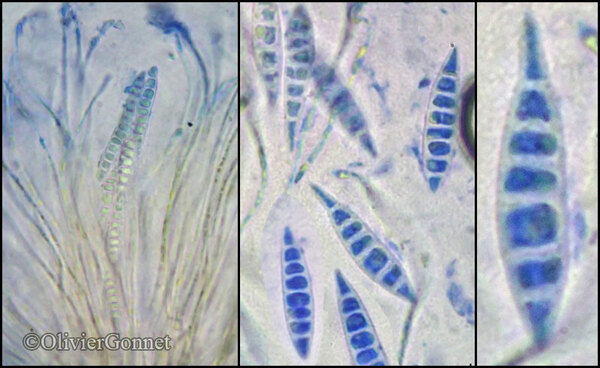
Courtesy Danièle et Olivier Gonnet - Source: https://www.afl-lichenologie.fr/Photos_AFL/Photos_AFL_G/Gyalecta_hypoleuca.htm
France, session AFL Luberon 2009 - Vaucluse

Collezione lichenologica Abramo Massalongo del Museo di Storia Naturale G. Ligabue di Venezia - Autori: Seggi, Linda; Trabucco, Raffaella Proprietà: Fondazione Musei Civici di Venezia - CC BY-NC
Italy, Veneto, in oppido Velo
as Thelotrema gyalectoides
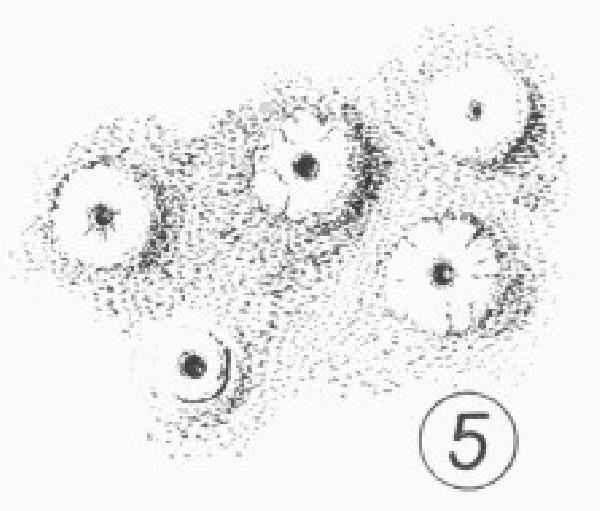
Source: Vězda A. (1965) Preslia 37: 127-143 Flechtensystematische Studien I. Die Gattung Petractis Fr.
Growth form: Crustose
Substrata: rocks
Photobiont: Trentepohlia
Reproductive strategy: mainly sexual
In underhangs rarely wetted by rain
Commonnes-rarity: (info)
Alpine belt: extremely rare
Subalpine belt: very rare
Oromediterranean belt: extremely rare
Montane belt: rather common
Submediterranean belt: extremely rare
Padanian area: absent
Humid submediterranean belt: extremely rare
Humid mediterranean belt: absent
Dry mediterranean belt: absent

Predictive model
| Herbarium samples |


P.L. Nimis; Owner: Department of Life Sciences, University of Trieste
Herbarium: TSB (35426)
2002/12/02


P.L. Nimis; Owner: Department of Life Sciences, University of Trieste
Herbarium: TSB (17181)
2002/02/21


P.L. Nimis; Owner: Department of Life Sciences, University of Trieste
Herbarium: TSB (16899)
2001/12/10

Courtesy Danièle et Olivier Gonnet - Source: https://www.afl-lichenologie.fr/Photos_AFL/Photos_AFL_G/Gyalecta_hypoleuca.htm
France, session AFL Luberon 2009 - Vaucluse

Courtesy Danièle et Olivier Gonnet - Source: https://www.afl-lichenologie.fr/Photos_AFL/Photos_AFL_G/Gyalecta_hypoleuca.htm
France, session AFL Luberon 2009 - Vaucluse

Courtesy Danièle et Olivier Gonnet - Source: https://www.afl-lichenologie.fr/Photos_AFL/Photos_AFL_G/Gyalecta_hypoleuca.htm
France, session AFL Luberon 2009 - Vaucluse

Collezione lichenologica Abramo Massalongo del Museo di Storia Naturale G. Ligabue di Venezia - Autori: Seggi, Linda; Trabucco, Raffaella Proprietà: Fondazione Musei Civici di Venezia - CC BY-NC
Italy, Veneto, in oppido Velo
as Thelotrema gyalectoides

 INDEX FUNGORUM
INDEX FUNGORUM
 GBIF
GBIF
 DOLICHENS
DOLICHENS

